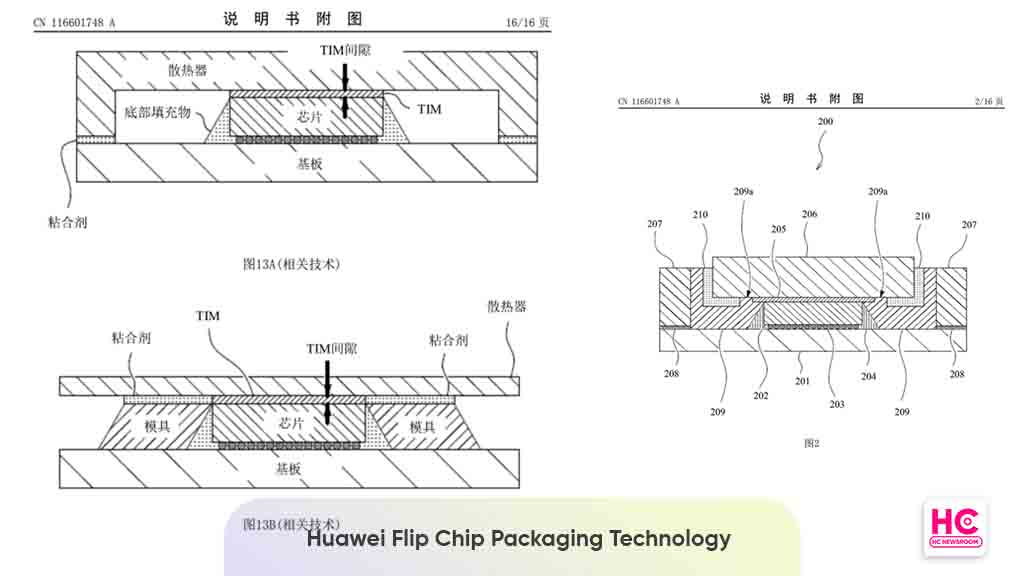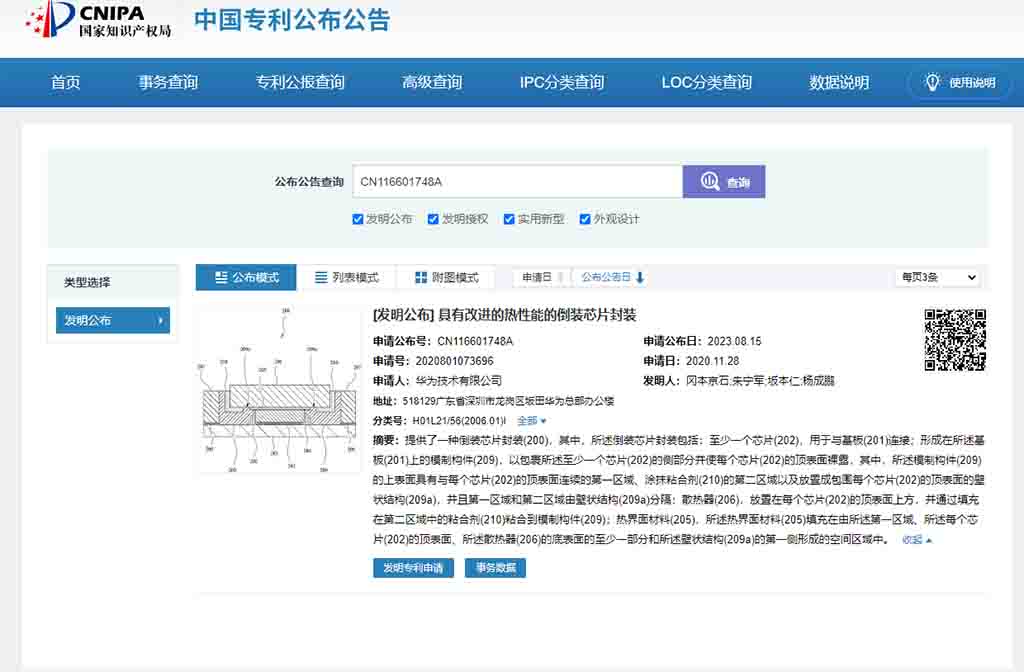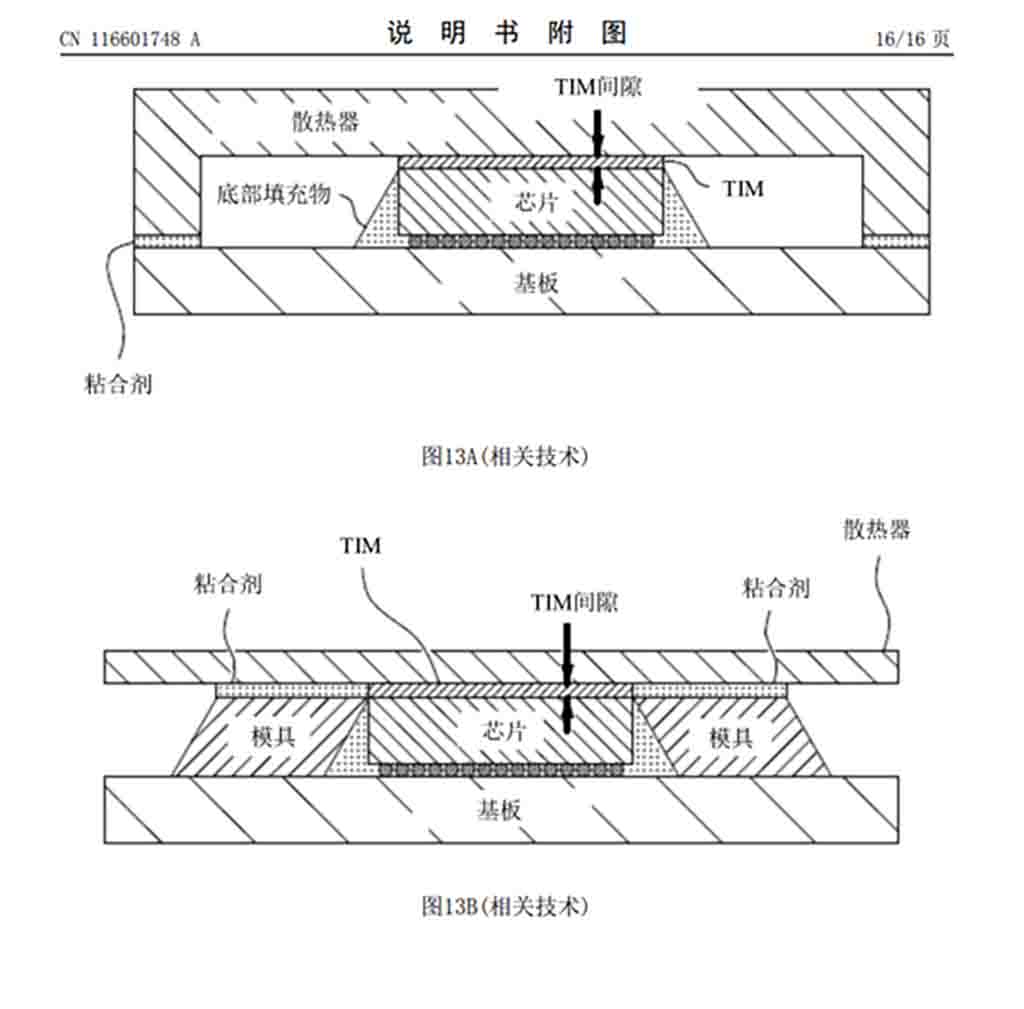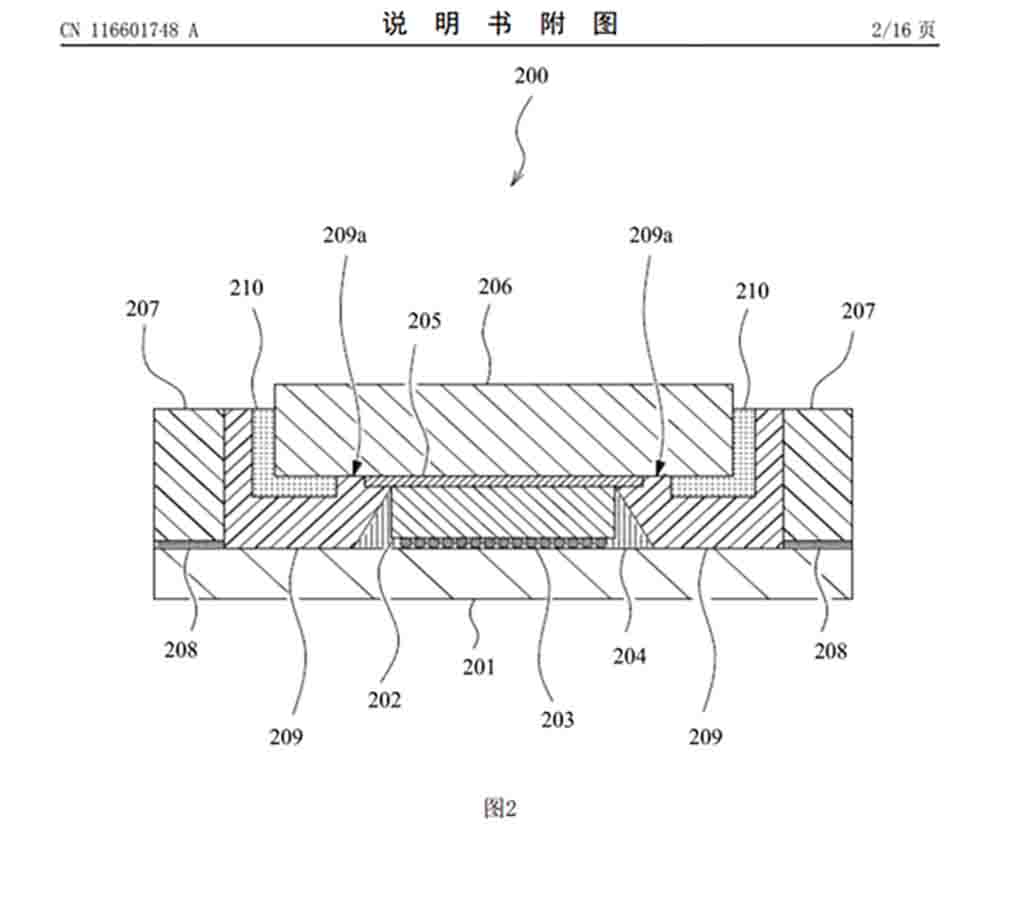News
Huawei patent flip chip packaging technology for CPU, GPU heat management

On August 15th, China’s CNIPA published a new Huawei chip patent with publication number CN116601748A, which was filed on November 28, 2020. This new Huawei patent is titled “flip chip package with improved thermal performance”, which indicates a new heat management solution for packaging.
In contrast, the patent shows how the tech will package the chip with the highest resistance against thermal conditions. According to the information, this solution could be applied to CPU, GPU, FPGA (Field Programmable Gate Array), ASIC (Application Specific Integrated Circuit), and other types of chipsets. Afterward, these chips can provide better performance in smartphones, tablets, wearables, PCs, workstations, servers, and more electronic devices.

Why thermal management is important for a chipset?
During operations, the chipset takes the load of each task that you perform on a device, which generates heat. Without proper thermal management, these devices can overheat, leading to reduced performance, shortened lifespan, and potential damage to components.
Therefore, the chipset now has its own thermal management solutions, which apply during the packaging.
Huawei:
The patent mentions that the growth in semiconductor packaging handling performance has bolstered the demand for thermal performance to ensure stable output. To address these demands, the Huawei flip chip packaging tech offers new improvements in terms of heat reduction with its packaging structure. This includes the chip, which is connected to the substrate via its underlying bumps and enables the positioning of the heat sink on the top surface of the chip.
To improve the cooling system, thermal interface material (TIM), such as thermal grease, is applied to the top surface of the chip and sandwiched between the chip and at least a portion of the heat sink.
From the viewpoint of reducing the thermal resistance in the TIM to improve the thermal performance of the package, it is preferable to make the thickness of the TIM smaller. The thickness of TIM in Huawei’s patent is limited by the height of the wall-like structure in the molded component.

The control over TIM allows Huawei to tune the desired minimum thickness, resulting in improved thermal performance.
Below you can check the technical summary.
A flip-chip package (200) is provided, wherein the flip-chip package comprises: at least one chip (202) for connecting to a substrate (201). A molded die formed on the substrate (201) member (209) to wrap the side portion of at least one chip (202) and expose the top surface of each chip (202), wherein the upper surface of the molding member (209) has a 202), a first region where the top surface of each chip (202) is continuous, a second region where the adhesive (210) is applied, and a wall-like structure (209a) placed to surround the top surface of each chip (202), and the first region and the second Areas are separated by wall-like structures (209a).

Heat sinks (206), placed above the top surface of each chip (202), and bonded to the molded member by adhesive (210) filled in the second area (209). Thermal interface material (205), the thermal interface material (205) filled in the first region, the top surface of each chip (202), and the bottom surface of the heat sink (206). In the space region formed by at least a part of the wall structure (209a) and the first side.
Currently, Huawei has not announced the use of this flip-chip packaging patent in action for heat management.
(source – Mydrivers)






